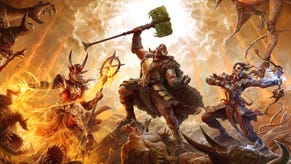Diablo 4 tested: a great experience on all current-gen consoles
But what about last-gen?
Some eleven years after Diablo 3, Blizzard is back with another barnstorming hack and slash adventure. Diablo 4 is a return to the dark, realistic stylings of the first two series entries, with modern rendering tech and a focus on current-gen consoles and PC. At a glance, it's definitely a pleasing effort, especially when you consider the colossal visual leap from the prior games - but can it sustain the 60fps delivered by its predecessor? Do the new visuals take special advantage of the latest console hardware? And what about last-gen consoles?
The most impressive aspect of Diablo 4's visual presentation is the lighting. Essentially, most lights within the game world are shadow-casting, and the player gets a sort of soft frontward-facing light to illuminate the area around them that also casts shadows. The subtle play of the shadowmaps as you move through each interior space is very cool, very attractive, and very atmospheric. Light just dances through dark spaces in a really pleasing way, with softly diffused shadows moving in concert with the player character.
There are some interesting tricks going on here as well. Certain light sources showcase a kind of variable penumbra effect at times, with shadow detail falling off at range. And in some circumstances the lighting can cast multiple shadows at once off the same object. Diablo 4 isn't pushing any boundary-expanding tech here as far as I can tell, but a lot of attention has clearly gone into lighting the game, especially in the game's softly-lit, dark dungeon interiors.
Diablo 4 also features quite impressive environmental detail and asset work. Each environment is caked with geometry, with a ton of little crannies and crags across every worn surface. The game is almost always presenting a top-down view nearly parallel to the ground, so you don't really get the opportunity to inspect anything from close range, but from the gameplay view all the details in the world hold up very well.
Materials appear to get a very solid PBR treatment, which lends environments a muted-but-accurate look, with soft diffuse snow and dirt, shiny worn floors, and speckled wet stone. The overall look of the game reminds me quite a bit of 2021's Diablo 2: Resurrected, albeit this time with nicely-modeled, fully 3D environments and accurate lighting.
Occasionally the game segues into some proper in-engine cutscenes, which are presented with Blizzard's typical cinematic flair. These sequences are impressive, representing a big leap above other Diablo titles, which simply didn't have the graphical fortitude to pull off real-time close-ups like these, instead relying largely on pre-rendered cinematics to tell their story. You do still get a high-end CG intro in Diablo 4, but the other story segments are real-time sequences, which manage to hold their own despite the close camera angles.

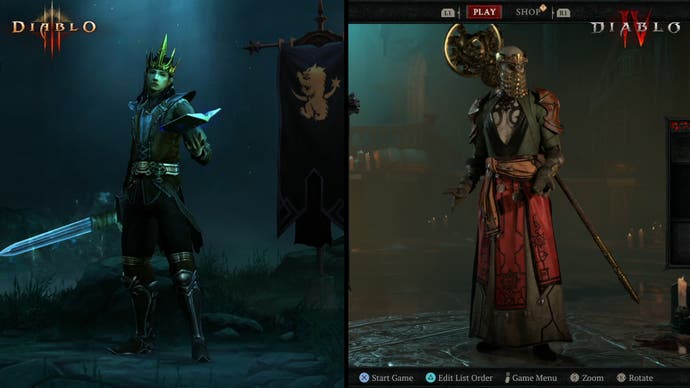
But the core of the Diablo 4 experience lies in its fast action combat. Like Diablo 3, enemy groups tend to be large and come at you fast, necessitating screen-filling crowd control and AOE abilities. When the screen is packed full of enemies and spell effects, the game looks excellent - but it still manages to remain legible for gameplay purposes. On a micro level, there's lots of cool touches as well. My sorcerer's ice spells have excellent-looking shaders, and frozen enemies get blasted into icy bits when hit with powerful abilities.
Physics is a big part of that. Enemies convincingly ragdoll when killed, or when cleaved into pieces. Bits of the environment can get blown apart when hit with an errant spell or hit with a melee strike. The results aren't as highly exaggerated as in Diablo 3, but it all feels appropriate given the more realistic visual tone. There's a lot of environmental animation too - like the pulsing mass here - alongside foliage that bends with the wind and a variety of weather effects.
Really Diablo 4 just feels very organic. The world has a certain lived-in quality, thanks to the asset work, and feels very interactive because of the lighting, physics, and nice little touches like geometric snow deformation. It's an impressively realised effort, and a very polished game from a visual perspective.
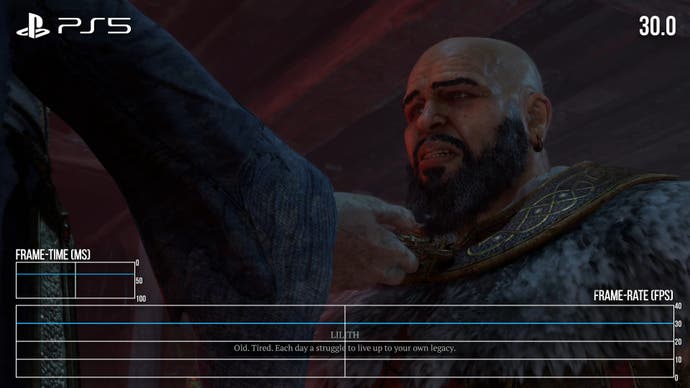
At the same time, we're not necessarily seeing much in the way of current-gen pushing tech. There's no ray tracing at hand - shadows definitely take the form of shadow maps, for instance, and reflections are taken care of with a screen-space effect. And there are certain visual choices that stem from the game's isometric camera that won't suit all players.
For instance, there's no true day/night cycle. Instead, the game switches between day and night every so often when you teleport from place to place, enter a location, or during certain missions. The game's shadow position seems carefully set for artistic and legibility reasons, but I'm sure this will annoy some players. And there's no camera control whatsoever, without options to zoom out at all. The game's camera position is a touch too close to the action for monitors in my opinion, and players have no ability to change that.
So Diablo 4 is a sophisticated, visually polished adventure - but how do the current-gen consoles stack up? Resolution-wise, Diablo 4 pairs relatively low internal resolutions with a form of upsampling - based on the artifact patterns, it seems like AMD's FSR 2 - to produce a sharp, detailed final image. On PS5 and Series X, the internal resolution appears to be circa-1260p, with the possibility of dynamic resolution, though I didn't spot evidence of it in my testing. The game is reconstructed to 4K though, so for all practical purposes we're getting a very clean final resolve. There's so much consistency from frame-to-frame because of the isometric camera that spotting any reconstruction issues is a challenge - I did see some ghosting artifacts on foliage while playing but that's pretty much it.
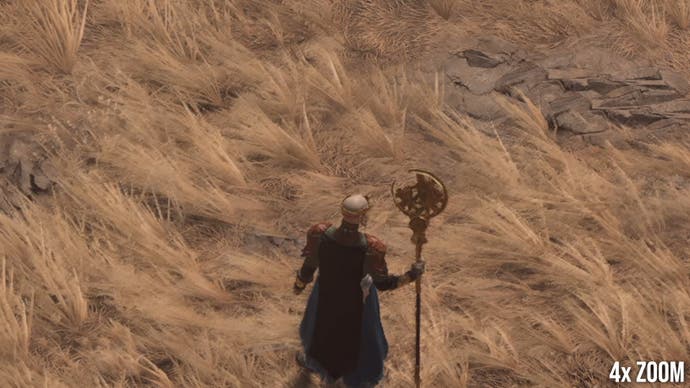
Series S acquits itself pretty similarly, with a smooth, nicely resolved image free of artifacting. Here the internal resolution is about 864p, with upsampling reconstructing the image to something in the vicinity of 1440p. It does look somewhat softer than the premium machines, but it holds up just fine on a 4K TV from a typical viewing distance.
Outside of the differences in image resolve, there's not a whole lot that separates the current-gen machines. PS5 and Series X basically seem like a match in terms of visual settings, though randomised environment elements sometimes look different across the two consoles. Series S gets a few nips and tucks, with lower res shadowmaps, less convincing ambient occlusion, and simplified ground details in certain spots. The S does have a lower install size and it's likely that some of the assets have been pruned a bit, but from the gameplay camera any significant changes were hard to spot. Really the game looks great on all current-gen consoles, and the Series S version is less compromised than usual.
Diablo 4 targets 60fps on ninth-gen consoles, and hits that target the vast majority of the time. Series S and X can drop a frame or two very occasionally during open-world traversal, but do stick to 60 otherwise. PS5 seems to lose frames a bit more often, with regular one-off dropped frames in the game's large Kyovashad city area. It's not a big deal in any event though. Large combat encounters don't seem to cause issues on any of the three platforms, though it's possible that complex endgame content could provoke issues that we're not seeing here. I did notice however that a handful of specific enemy animations update sort of irregularly, though I suspect this isn't intended behaviour, as most animations progress at a full animation rate even with enemies that are distant from the player character. Plus, cutscenes do run at 30 frames per second, though I didn't really mind.
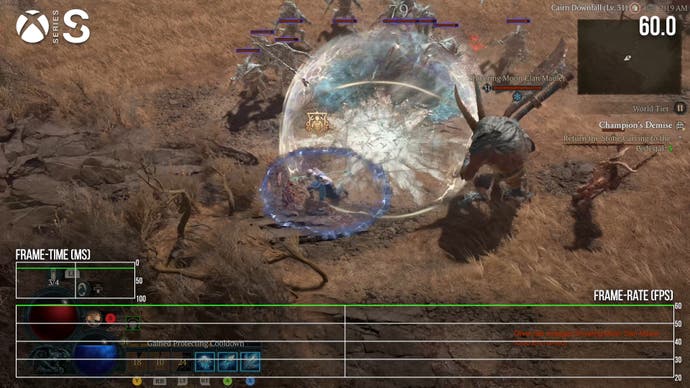
Current-gen consoles are mostly in good shape - so how does the game fare on last-gen machines? I don't have time to run through every console here, so I've picked the PS4 as my point of reference. The biggest cutback by far is the move towards a 30fps frame-rate target. Diablo 4 aims for a mere 30fps on last-gen hardware, and the game is punctuated with frame-rate drops and stutters on top of that, which can be quite severe at times.
There are also a handful of visual changes. Environmental geometry is simplified and looks a lot chunkier on PS4, textures have a lower quality level, and shadow resolution takes another hit, with less distinct outlines than Series S. Internally, the PS4 is rendering the image at 720p, though the final resolved image has 1080p-like clarity, suggesting upsampling.
Diablo 4 on last-gen consoles is a serious downgrade from current-gen hardware, which mostly comes down to that 30fps frame-rate target. It just doesn't feel smooth at all coming from current-gen machines, especially given the constant scrolling movement of the camera and the complete lack of any motion blur. It's playable enough I suppose, but not ideal, and Diablo 3's 60fps update provides a much more fluid experience on the same hardware.

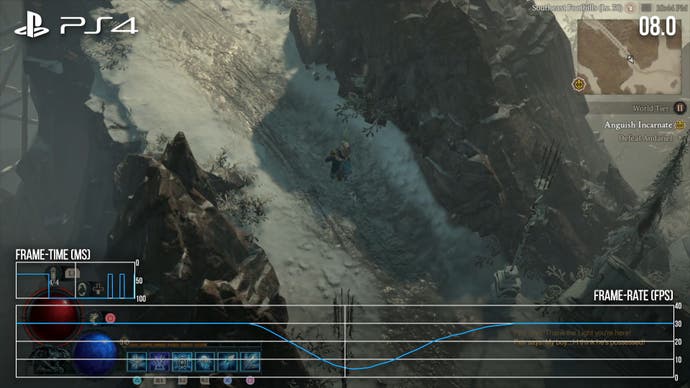
Diablo 4 is a game that surprised me. Blizzard's recent titles have embraced lower detail, stylised art, which helps them stay fresh even into relative old age. However, Diablo 4 embraces the realistic look of the first two series entries, and manages a less stylised look quite effectively. This is an ultra-polished, sophisticated looking game that looks very modern and is packed with detailed assets. It doesn't seem to be packing any boundary-pushing rendering tech, but it consistently looks excellent.
It plays very well too, thanks to a careful evolution of the gameplay systems from Diablo 3 and a larger, more open-ended world. The hack-and-slash combat has been dialed down a bit in terms of speed, with a greater emphasis on dodging enemy attacks and managing large crowds. Players are given more freedom to customise a character from the start of the adventure, with a highly flexible - though somewhat complex - skill system. I found it a lot more engaging than Diablo 3, at least during the pre-endgame leveling process.
The only caveat is that the game is - understandably - heavier than the Blizzard titles that preceded it. Even though Diablo 4 still seems fairly light by the standards of most recent releases, it's not a great experience on last-gen hardware. On the plus side, the current-gen versions are in excellent condition, and the game feels remarkably polished even at launch. Diablo 4 is a very impressive effort, and a welcome change of pace from the glut of technically compromised releases we've seen in recent months.
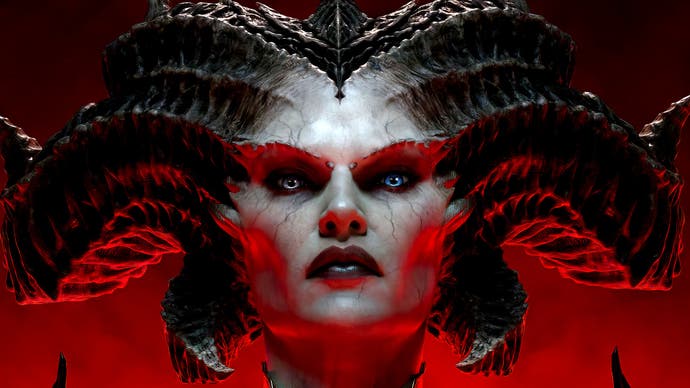






.webp?width=291&height=164&fit=crop&quality=80&format=jpg&auto=webp)


